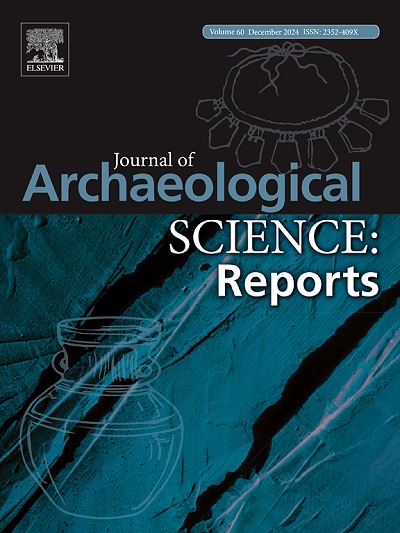A techno-functional analysis of ground stone tools from Late Mesolithic coastal sites in Morbihan (Brittany, France)
IF 1.5
2区 历史学
0 ARCHAEOLOGY
引用次数: 0
Abstract
Ground stone tools are important archaeological pieces of evidence that shed light on the lifestyles of Late Mesolithic human groups that existed along the Atlantic European coast. Therefore, understanding how these tools were produced and used is crucial for assessing the exploitation of the surrounding environments, identifying the activities carried out at these sites, and interpreting their role within the technological systems of prehistoric coastal groups. This article presents a techno-functional analysis of ground stone tools from three Late Mesolithic sites, Beg-er-Vil (Quiberon), Port-Neuf (Hoedic) and Téviec (Saint-Pierre-de-Quiberon), all located on the Morbihan coast (Brittany, France). The aim of this study is to characterise the use of these tools through a combined analysis of their morphology, manufacture, and macroscopic use-wears features, in order to elucidate their role in the exploitation of the surrounding environment. Compared to the ground stone tools found inland, those from the Armorican coast show a greater diversity in terms of the raw materials used and the morphologies of the pebbles selected. The present study demonstrates how tools from these coastal sites would have been employed in a variety of activities, such as food preparation or the crafting of animal materials. The contrast that emerges from an analysis of the diverse activities documented is indicative of a divergence in behavioural patterns, particularly in the context of ground stone tool assemblages. This observation stands in opposition to the results obtained from other areas of analysis, which reveal numerous similarities.
法国布列塔尼莫尔比汉(Morbihan)中石器时代晚期沿海遗址地面石器的技术功能分析
磨碎的石器是重要的考古证据,它揭示了中石器时代晚期生活在大西洋欧洲沿岸的人类群体的生活方式。因此,了解这些工具是如何生产和使用的,对于评估对周围环境的开发,确定在这些地点进行的活动,以及解释它们在史前沿海群体技术系统中的作用至关重要。本文介绍了三个中石器时代晚期遗址的石制工具的技术功能分析,贝格-埃尔-维尔(基伯龙),Port-Neuf (Hoedic)和tsamuviec(圣皮埃尔-德基伯龙),都位于莫比汉海岸(布列塔尼,法国)。本研究的目的是通过对这些工具的形态、制造和宏观使用特征的综合分析来描述这些工具的使用特征,以阐明它们在开发周围环境中的作用。与在内陆发现的地面石器相比,来自美洲海岸的石器在使用的原材料和选择的鹅卵石形态方面表现出更大的多样性。目前的研究展示了这些沿海遗址的工具是如何被用于各种活动的,比如食物准备或动物材料的制作。对记录的各种活动的分析所产生的对比表明,行为模式存在差异,特别是在地面石器工具组合的背景下。这一观察结果与从其他分析领域获得的结果相反,后者揭示了许多相似之处。
本文章由计算机程序翻译,如有差异,请以英文原文为准。
求助全文
约1分钟内获得全文
求助全文
来源期刊

Journal of Archaeological Science-Reports
ARCHAEOLOGY-
CiteScore
3.10
自引率
12.50%
发文量
405
期刊介绍:
Journal of Archaeological Science: Reports is aimed at archaeologists and scientists engaged with the application of scientific techniques and methodologies to all areas of archaeology. The journal focuses on the results of the application of scientific methods to archaeological problems and debates. It will provide a forum for reviews and scientific debate of issues in scientific archaeology and their impact in the wider subject. Journal of Archaeological Science: Reports will publish papers of excellent archaeological science, with regional or wider interest. This will include case studies, reviews and short papers where an established scientific technique sheds light on archaeological questions and debates.
 求助内容:
求助内容: 应助结果提醒方式:
应助结果提醒方式:


